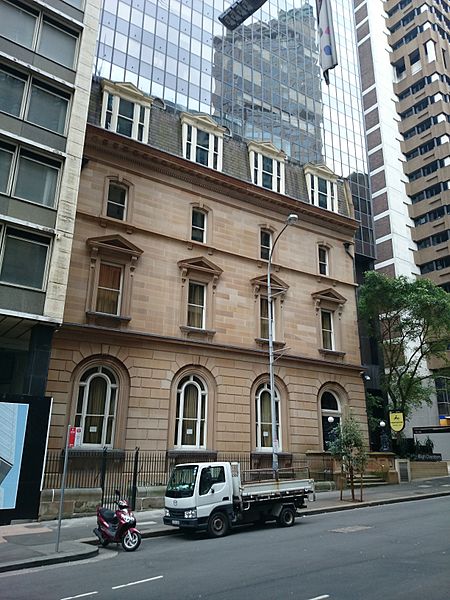New South Wales Club building
1887 establishments in AustraliaBuildings and structures completed in 1887Clubhouses in New South WalesNew South Wales State Heritage RegisterOffice buildings in New South Wales ... and 3 more
Sydney central business districtUse Australian English from October 2018William Wardell buildings

New South Wales Club building is a heritage-listed former clubhouse and now offices located at 31 Bligh Street, in the Sydney central business district, in the City of Sydney local government area of New South Wales, Australia. It was designed by William Wardell and built from 1886 to 1887 by John Try. It housed the New South Wales Club from 1886 until the club's amalgamation with the Australian Club in 1969. It was then sold and the two rear wings demolished in 1973 before the surviving front portion was converted to offices. It was added to the New South Wales State Heritage Register on 2 April 1999.
Excerpt from the Wikipedia article New South Wales Club building (License: CC BY-SA 3.0, Authors, Images).New South Wales Club building
Bligh Street, Sydney Sydney
Geographical coordinates (GPS) Address Nearby Places Show on map
Geographical coordinates (GPS)
| Latitude | Longitude |
|---|---|
| N -33.8656 ° | E 151.2101 ° |
Address
Mulpha House
Bligh Street
2000 Sydney, Sydney
New South Wales, Australia
Open on Google Maps







